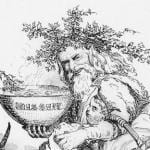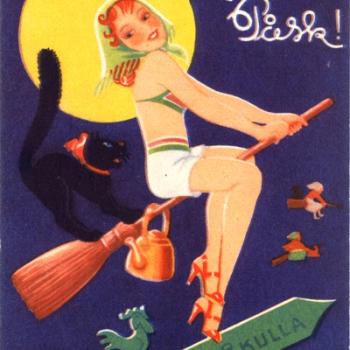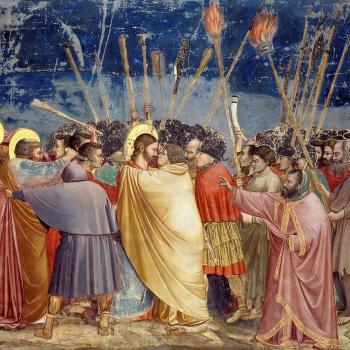Christingle sounds a bit like Kris Kringle… And that’s about all there is, really. Ostensibly, I am going to write about the use and tradition of rituals akin to the Christingle and the act of bringing light to the world in the renewal and seasonal cycle of the earth. However, laced throughout, as is my want and way, is the very necessary message that the importance of tradition lies in the present, not the past.
The internet and blogosphere is full of text, much like I’m guilty of doing in various posts, which posits a theory or pseudo-history that seeks to explain or legitimise something we hold dear within the context of our own perspective. In doing so, we perhaps seek to assuage our conscience when a part of us knows full well that the tradition we are incorporating is not what it seems, or what we would perchance prefer it to be. Indeed, I am going to put forth an interesting history and practice which I have used for many years based around the Christingle, itself a fairly recent seasonal tradition. However, I want to underlie this seasonal blog post with the sense that origins of tradition should be at least of secondary consideration besides what it means to us today, in this moment. True, the history of the thing might inform a large part of that, but it is always how we apprehend a thing in the present now that informs its spirit and meaning. This, of course, changes and shifts over time, as we ourselves evolve, along with the cultural mores and fashions of the time. However, if we approach and respond each time anew, keeping awareness grounded in the present of our conscious experience, we are engaged in a living tradition. And that, dear reader, is magic itself.
Now, where were we, yes the Christingle. It’s got nothing to do with Kris Kringle, except for the potential for a Christmas rhyme or limerick…
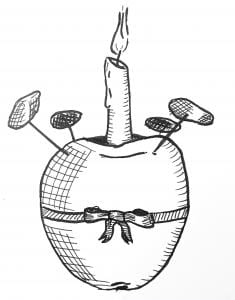
The Christingle, I hear you say, that’s a Christian thing, isn’t it? To which I would argue, simply, is it? It might have originated and be used by Christians to mark advent, but do not modern pagans celebrate the return of the sun at Midwinter, or the Solstice? Are not such celebrations ancient and ubiquitous to cultures across the globe? Of course they are. And what is a tradition unless it means something to us here and now?
Originating with Bishop Johannes de Watteville, the Christingle was spread from its origin in Germany, circa. 1747, by the efforts of John Pensom in 1968, raising money for The Children’s Society. Celebrating Jesus as the “Light of the World”, we have some pertinent symbolism that beautifully express the sentiment common to pagans and Christians alike: the return of the life nurturing light of the sun at the time of cold darkness . It’s a perennial symbolism and tradition. And yet, it is meaningless without bringing it to life in the now.
The orange so ably represents the world using fruit that has become synonymous with the smells and memories of the season. The red ribbon around the equator is perhaps the blood of Christ, or alternatively the Sangreal, the Blood Royal, if you like. The fruit or sweets skewered equidistant across the fruit should be all too familiar to Wiccans and pagans as representing the quarters, the cardinal directions and watchtowers, the seasons. Meanwhile, the candle is the light itself and it counts advent as it burns ever closer to the manifest world. It is beautiful in symbolism as it is in appearance.
Of course, we could seek to find an ancient British pagan origin, and it would be easy to knock one up. Cannelig is a Welsh and, if eminent Professor of History Ronald Hutton is to be believed, New Forest custom of decorating an apple, that most pagan of seasonal fruit. Etymology would render Cannelig as meaning literally “first day of the month” and being related to the word ‘Calendar’. Needless to say, it is a New Year custom of no great antiquity which shares with so many folk customs the tradition of going door to door and begging for simple victuals and hospitality.
The Cannelig apple was stuck with three sticks in the base to form a tripod, a sprig of holly, box or some other evergreen shrub planted in its top while the remainder is spiked with cloves, or alternatives including corn. This was carried from door to door by gangs of children, singing verse and collecting their ‘gifts’.
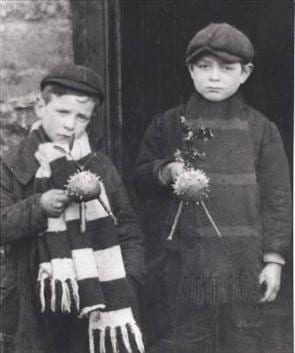
Of course, the two customs are almost certainly unrelated. However, the similarity indicates a perpetuation of symbolism and meaning, if not purpose, and the recurrence of such a similar tradition suggests that there is a commonality that cannot be denied. That both serve to ensure the welfare, in whatever meagre means, of the young is also testament to the sentiment of the season.
The thing is, poverty doesn’t care about your religion or beliefs. There are wonderful symbols which express anew each tradition and custom, many similar and seemingly occurring independently of each other, despite looking alike. If we are being in the present moment, however, there is no better time to consider the young who suffer at this time. Why not make your personal variation and establish a tradition of your own. And maybe make a donation to The Children’s Society. Thanks for listening and Happy Holidays.



